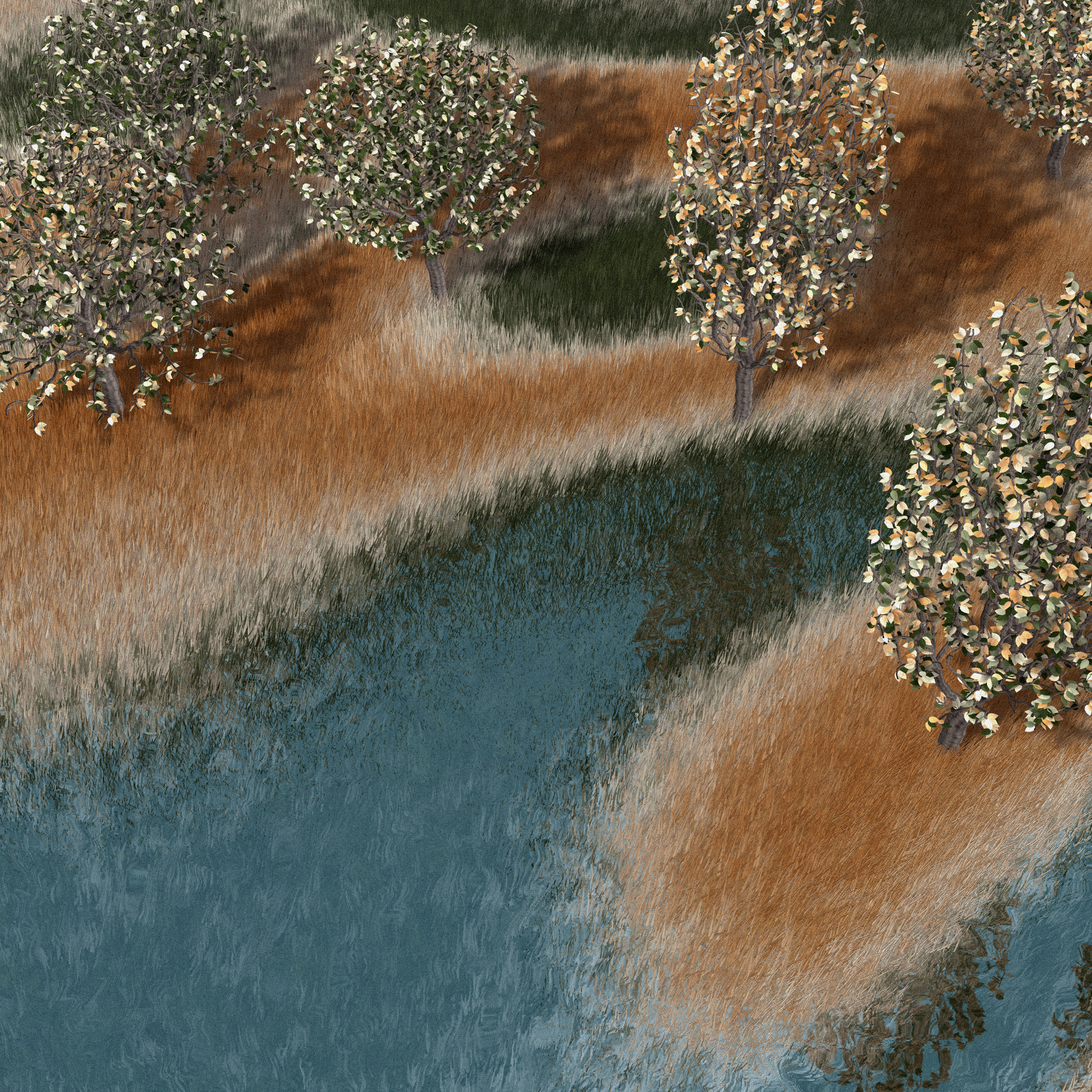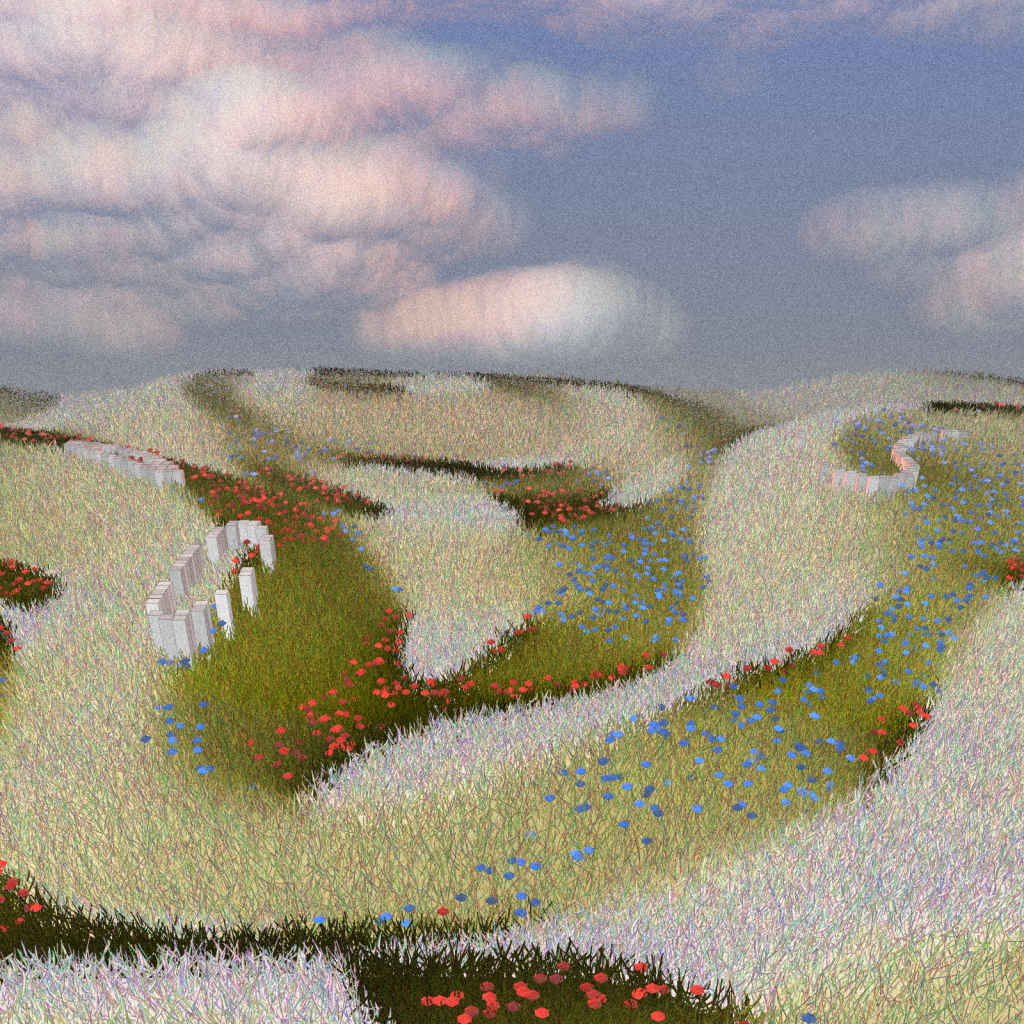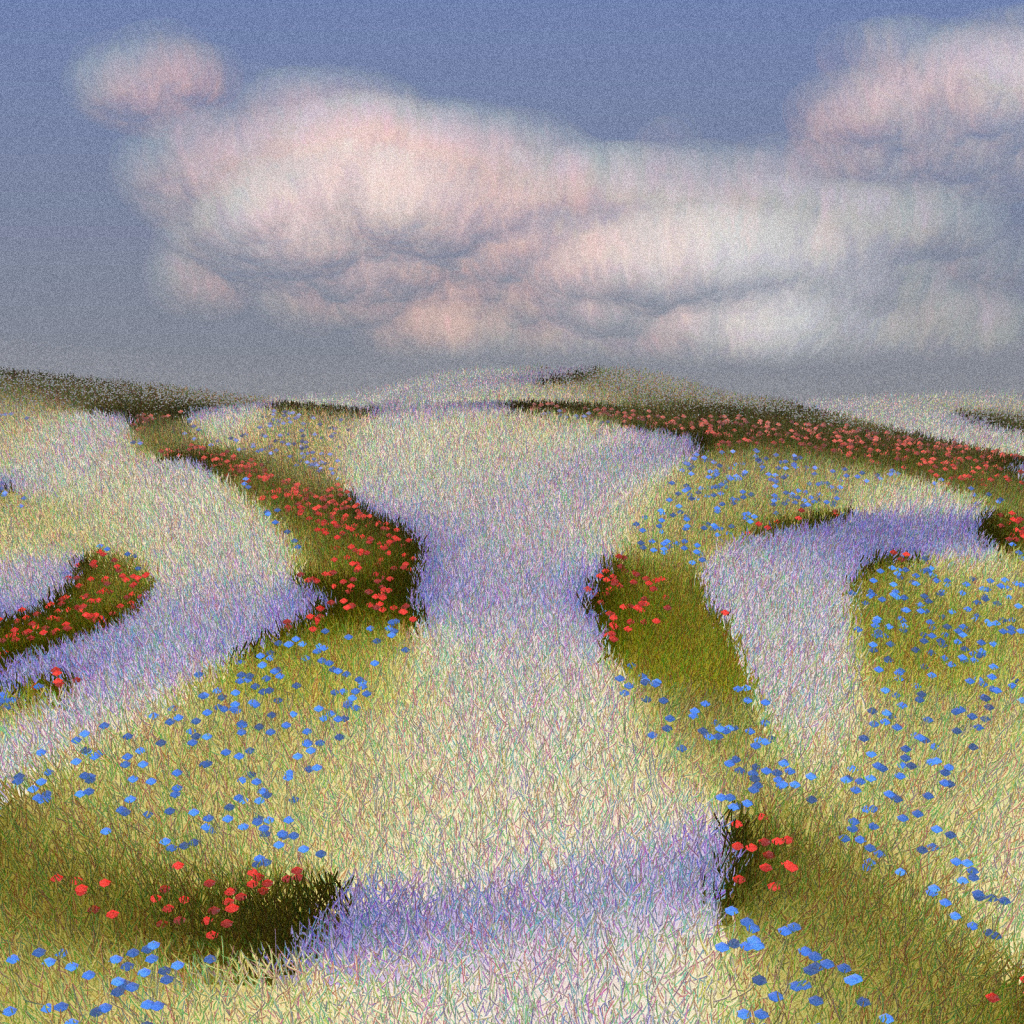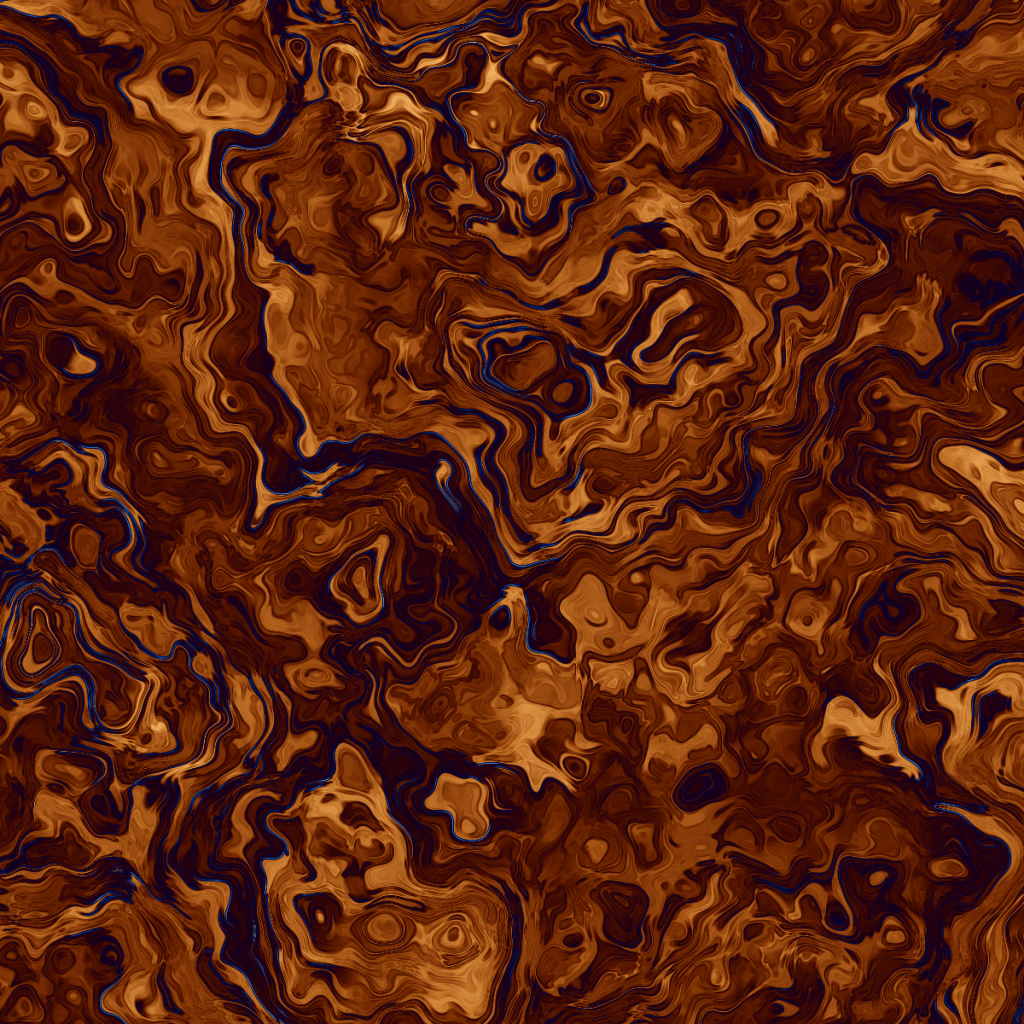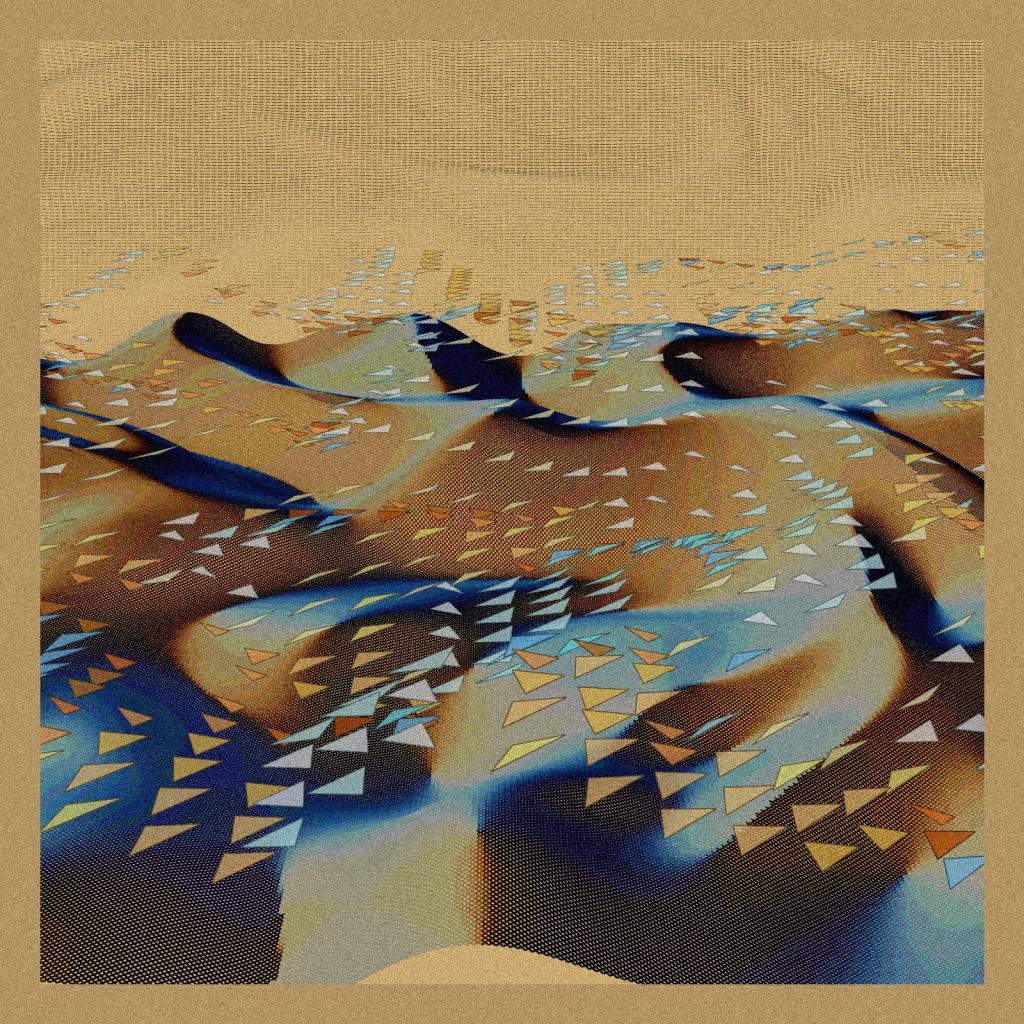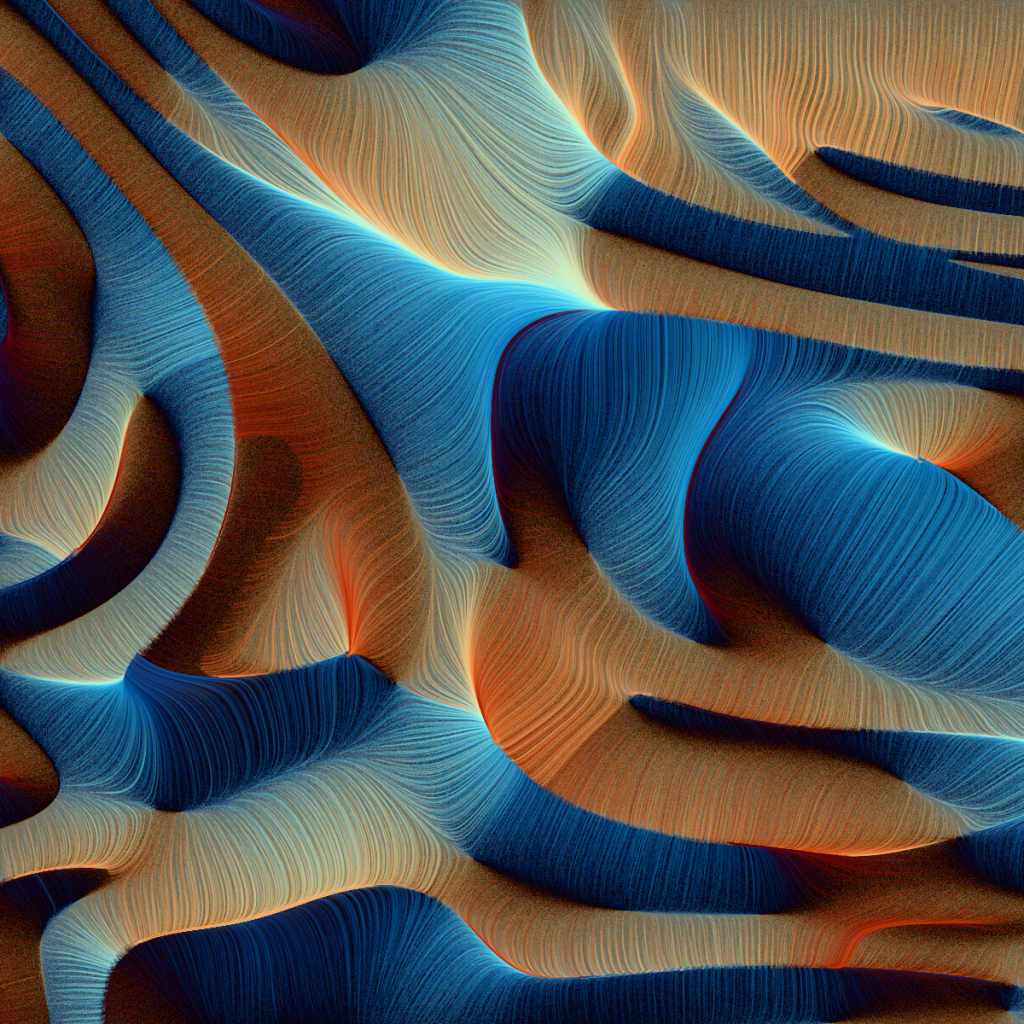A real time endless generative animation in vanilla Javascript WebGL GLSL.
The GLSL shader generates a warped FBM noise and applies convolution kernels for the Unsharpen and Sobel operators. The Sobel operator provides both the magnitude and direction of the gradient, one is used to highlight edges, the other to achieve a shading effect.
The main parameters for the animation can be chosen with the fx(params) interface.
The minted iterations will differ as the noise generation is seeded via fxrand().
The animation can be rendered in fullscreen at 16/9, 9/16, or 1/1 aspect ratio.
Requires WebGl compatible browsers.
Parameters
———-
Palette
– select palette
Noise Scale
– zoom in the noise field
FBM Octaves
– choose how much octaves in the FBM [4, 5, 6, 7]
Speed
– speed of animation
Warp Kind
– select the warping method [five kind]
Coeff. Noise
– amount of the main noise field
Coeff. Unsharp
– amount of unsharp filter
Coeff. Sobel
– amount of edge highlight
Coeff. Gradient
– amount of shading effect
Grain
– amount of added grain noise
Interactivity
————-
[1] 1080×1080 [2] 1920×1080 [3] 1080×1920
[4] 2160×2160 [5] 3840×2160 [6] 2160×3840
[f] Fullscreen
[z]/[x] => -/+ Contrast
[c]/[v] => -/+ Brightness
[r] => Reset Contrast and Brightness
[s] Save a png in current resolution


